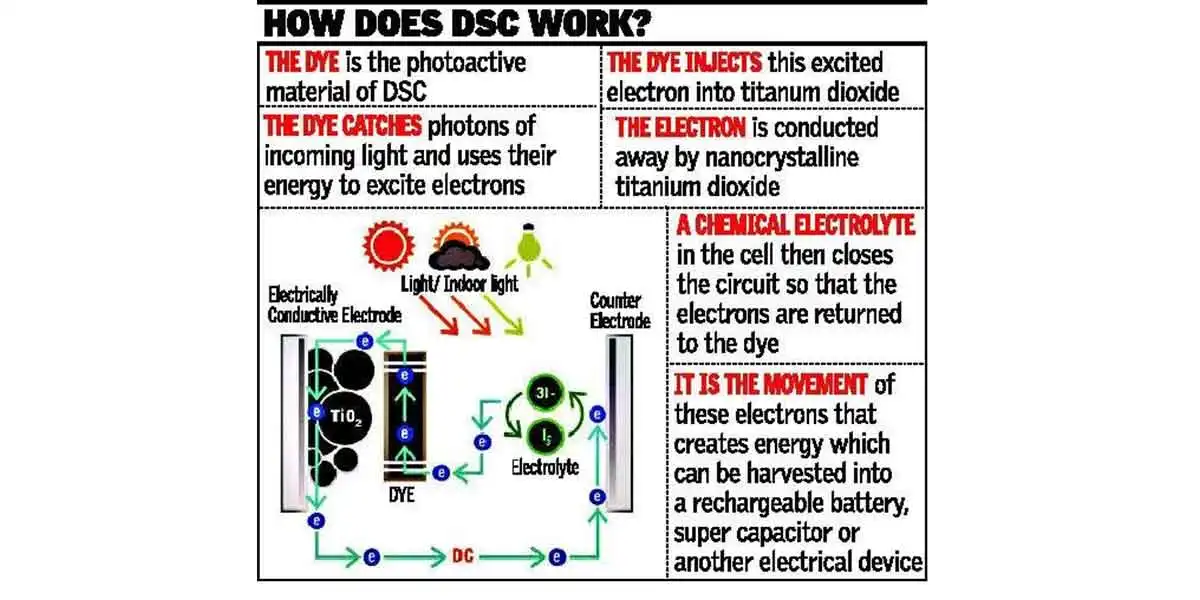Driven by the global demand for clean, renewable sources of power, countries across the globe are investigating Dye Sensitized Cell (DCS) technology to develop lightweight, flexible and cost-effective solutions for a variety of applications.
Over in South India, the Kerala State Council for Science, Technology and Environment (KSCSTE) recently took the initiative to introduce the technology through a tie-up with leading institutions in the field, as T. Nandakumar noted in
The Hindu.
Taiwan DSC PV Ltd.(TDP), which mainly aims to promote the key intermediate and battery pack of dye-sensitized solar technology, met with KSCSTE to discuss the possibility of deploying the disruptive technology in select areas of the state.
As explained by T. Nandakumar in The Hindu,
DSCs constitute "semiconductor nanocrystals coated with organic dye and sandwiched between glass panels or plastic films, along with an electrolyte. The dye is the photoactive material of DSC, and can produce electricity once it is sensitized by light."
DSC represents one of the most promising methods for future large-scale power production from renewable energy sources. In these cells, the sensitizer is one of the key components, harvesting the solar radiation and converting into electric current.
GROWING DEMAND FOR CLEAN ENERGY VIA SUN POWER
The development of a primary supply
of clean and sustainable energy is a top global issue. A great portion of today’s energy demand (85%) is fulfilled by fossil fuel-based resources at the expense of global warming and the consequent severe changes in climate.
- the energy demand is expected to increase twofold by 2050
- due to depleting fossil fuel reserves, an additional energy demand equal to today’s total energy consumption is expected in the next 30 years
- in 2014, energy consumption totaled about 15 TW; by 2050, the planet will need an additional 15 TW of energy
DSCs hold promise because they're cost-effective, relatively easy to fabricate on large panels, lightweight and flexible. In addition, DSCs offer transparency compared with the previous generations of solar cells. Because of their unique transparency, DSCs can easily be integrated into building and automobile integrated photovoltaic devices (BIPVs, AIPVs), although outdoor long-term stability hasn't been achieved yet.
Among
renewable energy resources, solar energy alone has the potential to meet the world’s primary energy demand, which would require covering less than 0.4% of our planet’s surface with 15% efficient solar panels.
After all, energy from sunlight is 200 times more abundant than all other renewable energy resources combined. In fact, the yearly amount of solar energy reaching the surface of the earth equals about 120,000 TW. That's a lot of juice, folks.
Let's put it another way: swap out those 15% efficient solar panels with 25% efficient ones, and panel a 400 km by 400 km solar farm with them in the Sahara desert. Voila. We'd meet our planetary energy needs.
DSCs CAN POWER A MYRIAD OF APPLICATIONS
Tim Lai, General Manager, TDP, says DSCs could offer substantial savings in power consumption because the technology offers the advantage of harnessing both sunlight and indoor lighting. It's also the best power solution under low light conditions, Lai
tells Nandakumar.
Cheaper than conventional silicon solar panels, DSCs can be printed on flexible surfaces and work more efficiently in ambient light conditions.
Lai says the company is developing DSCs for self-powered wireless sensors and detectors and wearable devices, as well. “DSCs are flexible, customizable and need no maintenance," he says. "Cheap and easy to install, they are the best option for smart buildings."
Suraj Soman, CSIR-National Institute for Interdisciplinary Science and Technology,
adds that DSCs have the potential as a power source for IoT (Internet of Things) devices and mobile phones, to provide solar installations in remote areas, and alternative power for buildings and vehicles.




